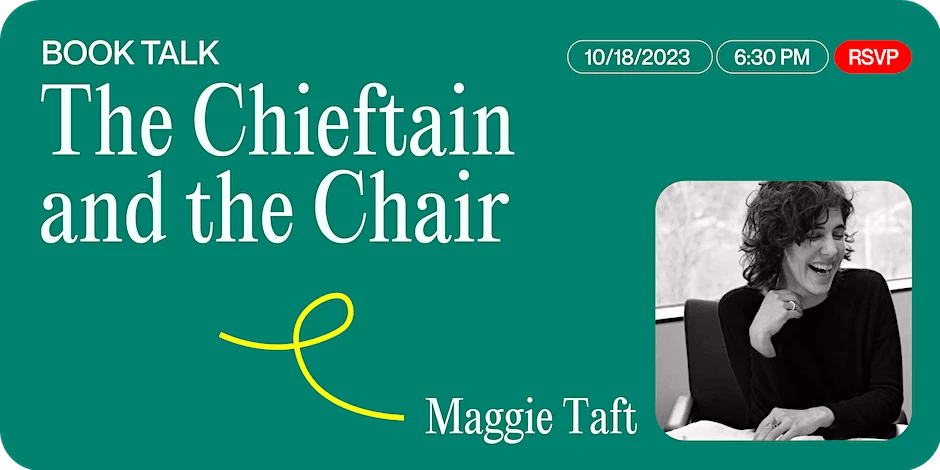Talk
Maggie Taft, ‘The Chieftain and the Chair’

MA Design Research, Writing, and Criticism
136 West 21st Street, 2nd floor, New York, NY 10011Reception
Wed, Oct 18; 7:30 - 8:30pm
Today, Danish Modern design is synonymous with clean, midcentury cool. During the 1950s and ’60s, it flourished as the furniture choice for Americans who hoped to signal they were current and chic. But how did this happen? How did Danish Modern become the design movement of the times? MA Design Research, Writing and Criticism presents a talk with Maggie Taft on her book, The Chieftain and the Chair, which tells the tale of our love affair with Danish Modern design. Structured as a biography of two iconic chairs—Finn Juhl’s Chieftain Chair and Hans Wegner’s Round Chair, both designed and first fabricated in 1949—this book follows the chairs from conception and fabrication through marketing, distribution, and use.
Doors open at 6:00pm; talk begins at 6:30pm. All talks are followed by a reception in the MA Design Research, Writing and Criticism studio, where guests can meet featured speakers and prospective students can chat with current MA candidates, faculty and alumni.
The Chieftain and the Chair explores the history of how Danish design rose to prominence in the postwar United States, becoming shorthand for stylish modern comfort. Today, Danish Modern design is synonymous with clean, midcentury cool. During the 1950s and 60s, it flourished as the furniture choice for Americans who hoped to signal they were current and chic. In The Chieftain and the Chair, Maggie Taft tells the tale of our love affair with Danish Modern design, structured as a biography of Finn Juhl’s Chieftain Chair and Hans Wegner’s Round Chair. This book follows the chairs from conception and fabrication through marketing, distribution, and use.
Drawing on research in public and private archives, Taft considers how political, economic and cultural forces in interwar Denmark laid the foundations for the postwar furniture industry, and she tracks the deliberate maneuvering on the part of Danish creatives and manufacturers to cater to an American market. Taft also reveals how American tastemakers and industrialists were eager to harness Danish design to serve American interests and how furniture manufacturers around the world were quick to capitalize on the fad by flooding the market with copies.
Writer and art historian Maggie Taft, PhD is founding director of Writing Space, which offers artists and designers resources supporting creative, professional and other forms of writing. Taft’s writing and reviews have appeared in magazines and journals including Artforum, The Point, Texte Zur Kunste, Design & Culture and Journal of Design History. She is curator of the forthcoming semi-permanent exhibition at the new Shaker Museum in Chatham, New York.

